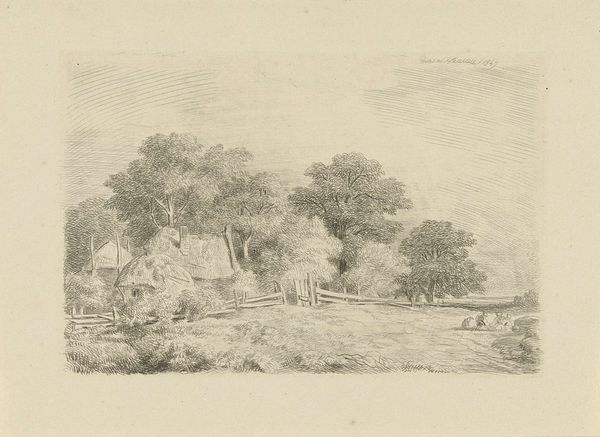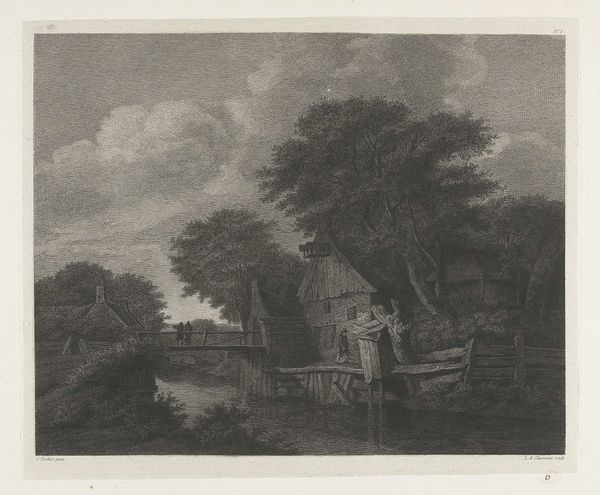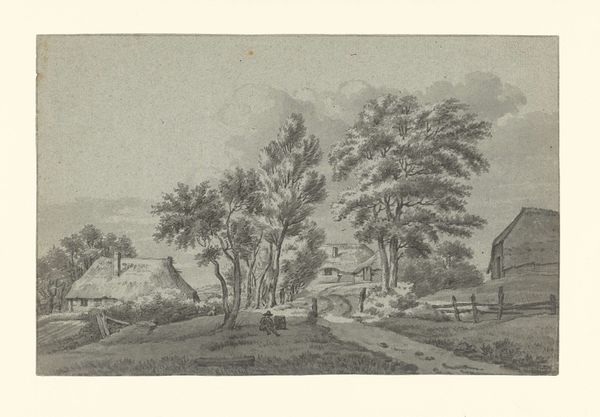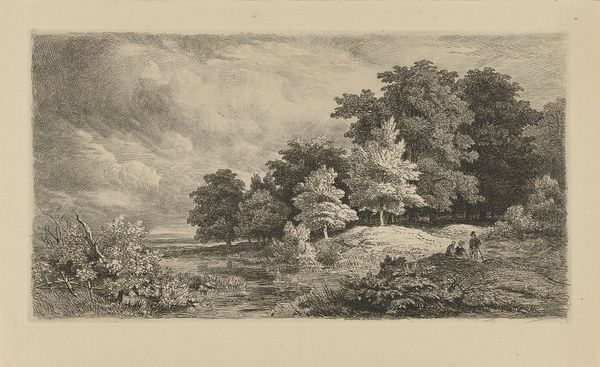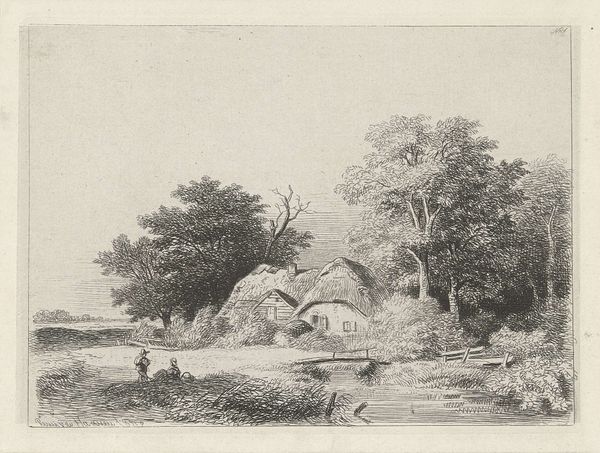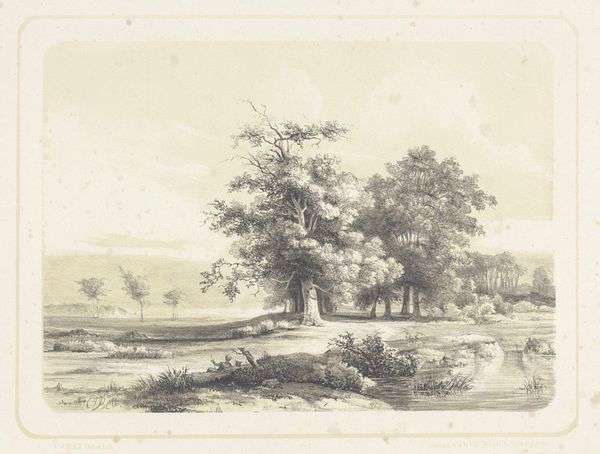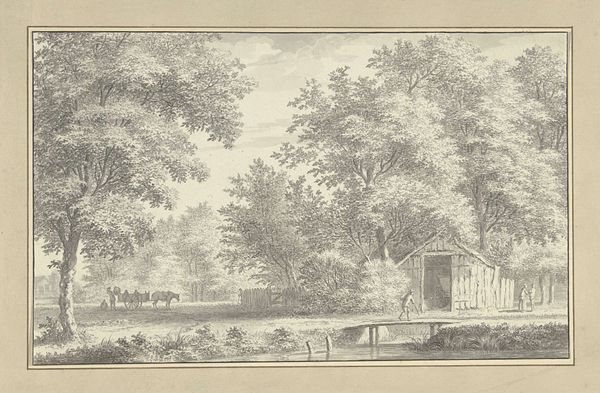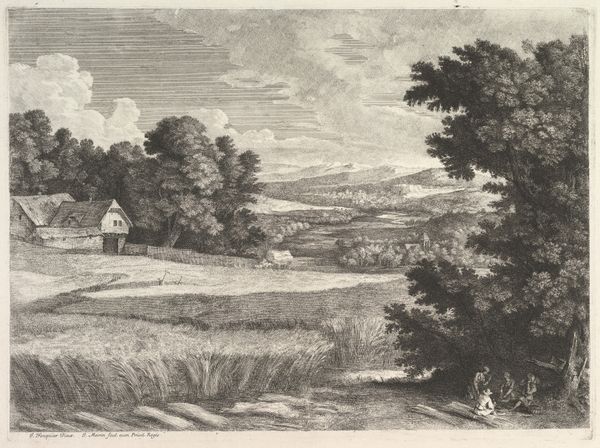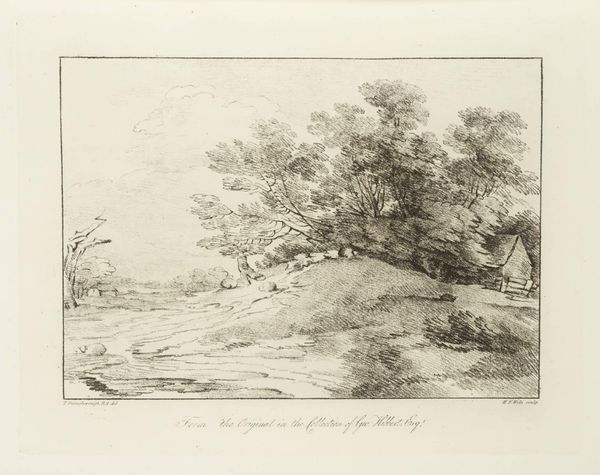
print, etching
# print
#
etching
#
landscape
#
realism
Dimensions: height 195 mm, width 300 mm
Copyright: Rijks Museum: Open Domain
Curator: Immediately, I’m struck by the tranquility, even with such dense hatching. It's a somber scene, isn’t it? A touch melancholic, perhaps? Editor: Indeed. This is Remigius Adrianus Haanen's "Watermolen in een boomrijk landschap," an etching that probably dates from the period of 1827 to 1888. Its title translates from Dutch to "Watermill in a wooded landscape". The use of etching in prints gained importance during the late 18th century and it’s curious how artists made prints accessible. Curator: It’s precisely the etching that contributes to this mood! See how the clustered lines almost obscure the architecture. Look how closely the mill is enmeshed into its natural surrounding, blending almost. The buildings look temporary. Editor: The architecture of rural life did embody distinct connotations: it showcased the period's prevailing attitude toward urbanization. Picturesque landscapes, like Haanen’s work, were powerful statements about a burgeoning longing to go back to an imaginary life outside the industrialising cities. Curator: So this idealized natural place would then have served as a political and philosophical statement in response to societal change? And consider the symbols within the composition; a dilapidated mill, the dense foliage and the cloudy sky. Haanen speaks to the temporary condition of rural life. Editor: Yes, and what’s also quite compelling is how art historians, like myself, use printed images to assess the expansion of an art market or even political shifts during these crucial eras. Prints, due to their cheap and accessible nature, helped information to spread. Curator: Which gives works like this such symbolic weight, that lingers through our own culture still today! The longing for the pre-industrial rural is still strong. These symbols really persist. Editor: Ultimately, that’s what's fascinating about these landscape prints: they mirror societal values in nuanced ways, revealing complex interactions between economic history, cultural symbolism, and art's ever-changing roles. Curator: Absolutely. It provides an opportunity to recognize those enduring societal anxieties captured by the artist’s skilled needle.
Comments
No comments
Be the first to comment and join the conversation on the ultimate creative platform.
